An interview with Professor Chandra Wickramasinghe
Conducted by Dr Predrag Slijepcevic, Brunel University London
Professor Chandra Wickramasinghe is best known for his work on the modern version of the panspermia theory – life in the form of microbes has the cosmic origin – conceived and developed in collaboration with his PhD supervisor and a long-term collaborator, the great astronomer Sir Fred Hoyle (1915-2001).
Professor Wickramasinghe is a truly unique individual. Apart from being a scientist, he is an award winning poet. He was born in 1939 in Sri Lanka and was educated at the Royal College Colombo and later at the University of Ceylon. He was awarded a PhD in Mathematics from Cambridge University in 1963 and an ScD in 1972. At Cambridge, he was elected a Fellow of Jesus College and served as a staff member at the Institute of Astronomy. In 1973 he was appointed the Head of Department of Applied Mathematics & Mathematical Physics at Cardiff University. He is currently a honorary Professor at Buckingham University.
Out of his 350 scientific papers, many are published in Nature. He authored and co-authored 30 books. His exceptional career took him to many universities world-wide, where he held visiting professorial appointments. Professor Wickramasinghe holds honorary doctorates from Soka University of Tokyo, Japan and University of Ruhuna, Sri Lanka. He is a recipient of numerous prizes.
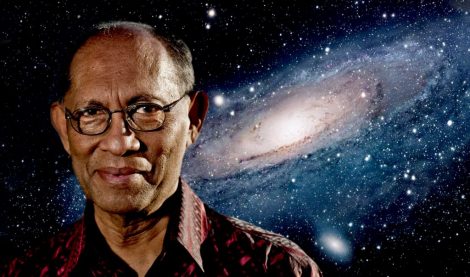
This interview was conducted on 5th April 2020. Professor Wickramasinghe takes us on a breathtaking journey that covers amazing discoveries in astronomy and astrobiology, his collaboration with Sir Fred Hoyle, his views on modern science and the COVID-19 pandemics.
PS: I would like to start with a question that takes us back to the beginning of your scientific career. You arrived at Cambridge from your native Sri Lanka in 1960, as a recent graduate in mathematics, supported by the Commonwealth Ph.D. studentship. We know that your Ph.D. supervisor was Sir Fred Hoyle. Did you have the freedom to select a supervisor, and if so what was your motivation to work with Sir Fred Hoyle?
CW: In my early teens I was given a book with the title Nature of the Universe by Fred Hoyle. I was an avid reader and had read all the great classics by the time I was 15. But this was a book that made a deep impression on me, and I instantly thought I should learn more about astronomy and hopefully become an astronomer! This was my childhood dream, and I cannot still believe that it came to pass, and most importantly that I actually ended up as a research student of this great icon, and moreover worked closely with him, and becoming his closest collaborator for more than half his life.
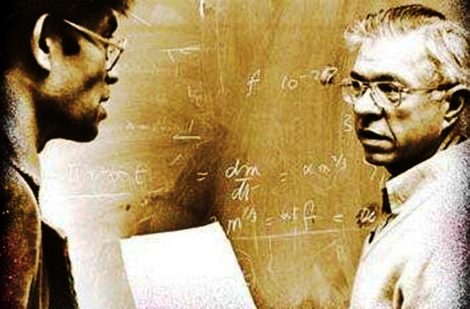
PS: Could you give us the appraisal of this truly great man, Sir Fred Hoyle? He was not only a great scientist but also an excellent science fiction writer and a lucid commentator on the relationship between science and society.
CW: I think in a final reckoning Fred Hoyle will be regarded as the most important astronomer in the 20thcentury. He changed astronomy more profoundly than anyone in well over 200 years. There is scarcely any area of modern astronomy that does not rely on some of his work at the deepest level. When I first arrived in Cambridge in October 1960 to begin working with Fred Hoyle, I could not have dreamt that he was to become not just my mentor, but latter a colleague and collaborator for close on half a century. When I first met him in 1960 he had already completed a monumental discovery that was to change astronomy and science forever. Working with Margaret and Geoffrey Burbidge and William A. Fowler, Fred Hoyle changed our perception of ourselves in a most fundamental way. He had demonstrated to the conviction of everyone that we are all made of star-stuff. The atoms of carbon, oxygen, nitrogen, phosphorous of which we are made were synthesised in nuclear reactions that took place in the deep interiors of stars, and expelled into space by the explosion of supernovae. Likewise, the atoms of silicon and iron in the rocks of the Earth were produced in stars. This was the first step in understanding our genesis, and of course this came to be accepted as an irrefutable fact without much dissent. The next steps in our journey towards unravelling the nature of our existence were taken by Fred Hoyle, myself and our many students and collaborators over nearly half a century. Acceptance of these next steps were not easy because it clashed with the egos of too many scientists, and we had to contend with a deeply ingrained prejudice that originated from as far back as the 3rdcentury BC – the idea that the transition from non-life to life was easy and happened spontaneously on the Earth. Despite over 50 years of experiments carried out in the laboratory this has been shown to be totally and utterly impossible.
PS: You published your first scientific paper in 1961. This was only a year into your Ph.D. study. In modern-day research, Ph.D. students are frequently constrained by what they can publish by the obligations their supervisors have towards funding bodies. Freeman Dyson famously said, “I hated the Ph.D. system”. He argued that “the student is condemned to work on a single problem to write a thesis”. For Dyson, this amounted to the lack of intellectual freedom, and he never bothered to get a Ph.D. Was Sir Fred Hoyle supportive and whether you had the freedom to express yourself scientifically under his mentorship?
CW: Yes, I did have complete freedom even from the start of my PhD. I had witnessed the total solar eclipse of June 20, 1955 when I was 16 from my home in Sri Lanka. This was an eclipse that had the longest period of totality in centuries and I became deeply fascinated by the physics of the sun. So when I went to see Fred and discuss research problems I asked him whether there were important problems about solar physics that remained unsolved. This led him to introduce me to solar physics and the unsolved problem of why the sun’s magnetic field reverses, and how the solar cycle works. I worked on this for several months and discovered enough interesting things to write my first paper in the Monthly Notices of the Royal Astronomical Society jointly with Fred. I had just finished reading Fred Hoyle’s science fiction novel “The Black Cloud” and I asked him whether he knew of any research problem in astronomy relating to life in the universe – and this was the beginning of our long journey together that lasted for over 40 years. He was a marvellous supervisor for me because he gave me the fullest freedom to explore ideas that may have appeared to many other people as outrageous ventures into the unknown.
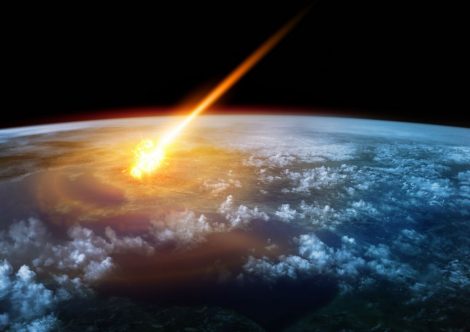
PS: During your Ph.D. days, apart from the hard work in mathematics and astronomy, did you have any other interests? I notice that you were a recipient of the Powell Prize for the English Verse in 1961. How do you see the art-science relationship?
CW: In addition to my interest in mathematics and science, from my early years I have been passionately interested in literature, particularly English literature and the Greek and Roman classics in translation. When I was choosing my course for University I was really torn between studying mathematics or English Literature! Fortunately, my earlier interest in astronomy led me to choose mathematics, and the rest is history. But I have always thought that science, art, music and literature explore the same world but using different tools. The universe is out there and we have evolved with an urge to understand it. At the age of about 18 I became interested in English poetry that was inspired by the Japanese tradition of Haiku. I wrote poems in this style and had some published in reputable anthologies. One such poem was the following:
Amidst a myriad stars
I stand alone
And wonder
How much life and love there was tonight.
In a strange way this presaged my later career in Cambridge where I started my lifelong quest to understand the question of life in the Universe and ultimately inventing the new discipline of Astrobiology. Although many people do not remember it Fred Hoyle and I actually came up with this name for a new emergent discipline in 1981.
PS: And now we come to the truly original research that you carried out in the last 60 years, that made you famous all over the world. Can you summarize for us your most important scientific achievements that paved the way for the emergence of the modern panspermia theory?
CW: At the time that I started my PhD project which was on interstellar dust astronomers believed firmly that the dust in all the dark clouds in the Milky Way was comprised of microscopic ice particles, similar to the ice particles that exist in the cumulous clouds of the Earth’s atmosphere. This was the theory that was proposed by the Dutch astronomer H.C. van de Hulst, and every astronomer subsequently regarded it as a proven fact. When I began to re-examine this question of what the dust was made of it became clear to me that there were many fundamental difficulties with the ice grain theory. My re-examination of the facts of astronomy combined with calculations of how light is absorbed and scattered by the interstellar dust led me to propose an alternative theory – the theory of carbon grains.
But how are these carbon grains, that must make up for one percent of the mass of all the stars, formed in such vast quantity? Our first argument published in 1962 was that they were comprised of graphite particles that condensed in the outflows from stars and supernovae. This already led to a controversy amongst astronomers, but after a decade most astronomers accepted the idea I had proposed implying that carbon was the main component of the dust. Through the 1970s with the birth of the new discipline of infrared astronomy and with observations of stars made above the Earth’s atmosphere, the widespread prevalence of organic molecules came to be accepted. In 1974 I wrote a paper in Nature arguing for organic polymers being involved in the cosmic dust, then other papers in Nature arguing for aromatic biologically relevant molecules – so this was the beginning of my adventures with Sir Fred Hoyle into the realm of biology. We soon discovered that what is claimed as evidence for life starting in a primordial soup on Earth simply did not exist, and moreover, there is no requirement to say that life must have started here. And astronomy was pointing us in the direction of the skies.
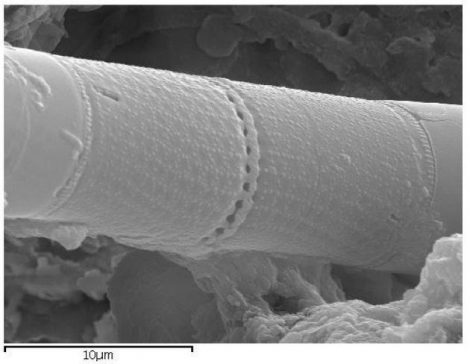
PS: Sir Fred Hoyle and you worked against the scientific mainstream to formulate the modern version of panspermia, also known as the Hoyle-Wickramasinghe (H-W) thesis of cometary (cosmic) biology. Please give us a detailed account of the emergence of this fascinating scientific theory and its development to the present day.
CW: The original formulation of panspermia is even older that the Aristotle’s idea of spontaneous generation and is due to another Greek philosopher Anaxoragas (510 – c. 428 BC) who proposed that the seeds of life are distributed throughout the cosmos. Panspermia is in fact a coined word derived from Greek roots – pans = everywere, spermata = seeds. Hoyle and I revived these ancient ideas in 1974 when astronomers were beginning to find that cosmic dust and also the dust from comets was made up of carbonaceous organic material. By 1982 we were finding that this carbonaceous dust was everywhere in the universe, and moreover, its light absorption and emission behaviour mimicked the behaviour of bacteria. This was the time when we proposed that life was a cosmic phenomenon. Seeds of life in the form of bacteria, viruses, viral genes are distributed throughout the cosmos and became assembled into living forms on habitable planets like the Earth.
Evidence to support our ideas came from many different directions. Now we know that the oldest evidence for microbial life on Earth is found in rock formations in Australia dating back to 4.2 billion years. This was a time when the Earth was being impacted by comets so the evidence that comets brought the first life is now very strong. Then we have evidence from the studies of extremophiles showing that many types of bacteria can survive conditions of space. And also, there is data from comets – e.g. the Rosetta Mission – that shows consistency with the presence of bacteria. Finally, there is data from bacteria collected in the stratosphere at a height of 41km showing bacteria at this height that are very, very unlikely to be lifted from Earth. Last year Russian scientists identified bacteria on the outside windows of the International Space Station (ISS) and these cannot be lifted from the Earth’s surface to the great height of the ISS which is 400km!
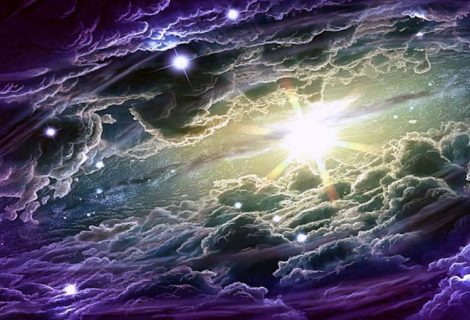
PS: In one of your recent articles, I found this truly amazing sentence: “… the entire galaxy (and perhaps our local group of galaxies) constitutes a single connected biosphere.” Could you please expand upon this statement?
CW: The essence of our theory of cosmic life is that the entire galaxy – perhaps the entire Universe – is one single connected biosphere. Physical transfer of biota involving exchange of meteorites, comets, and cosmic dust with an intermingling of genes must occur on a truly cosmological scale. We know that after life was first introduced to the Earth from comets that impacted it about 4.2 billion years ago, there is a progression – in fits and starts – of an evolutionary process that led to more and more varied as well as increasingly more complex life forms. Episodes of comet impacts are now reconstructed from geological evidence, and one particular explosion of life – the Cambrian explosion – was preceded by a period of comet impacts. Impacts not only have a destructive effect on life on Earth but also by bringing new genes in the form of bacteria and viruses facilitate the evolution of brand new life forms. This happened 540 million years ago at the time of the Cambrian explosion. Over the last few million years that led up to the emergence of Homo sapiens. Viruses seem to have been closely involved in the evolutionary process. The viral imprints of our evolutionary history have recently been discovered in our present DNA.
Collisions of comets and asteroids on an Earth that is laden with life not only destroys life, brings new genes in the form of viruses to boost evolution, but also eject debris that escape from the Earth containing genes (DNA) of lifeform on the planet. We now know that there are over 100 billion habitable planets in the Milky Way and as our solar system throws genes out into interstellar space some of these could certainly reach other life-bearing planets. In this way the whole of the Milky Way is one connected biosphere.
PS: Despite a large set of supporting data for the Hoyle-Wickramasinghe thesis, which was recently reviewed in a series of articles written by you and your collaborators, there is still a huge resistance towards it. Is this resistance scientific or cultural?
CW: I think the reason for the resistance is a deep-seated cultural resistance to accepting that we as living creatures are intimately connected to the external universe. Our sense of autonomy and independence is challenged. But evidence that is rapidly accumulating – e.g. the discovery of microorganisms coming in from space as for instance on the International Space Station – must sure change this perception. Only by understanding the cosmic origin of life would we ever be able to understand biology – and its wider purpose.
PS: In November 2019, before the world was aware of the existence of the now-infamous COVID-19 virus, you and your collaborators issued a warning to humanity based on your monitoring of ‘space weather’:
“On the basis of this data, there appears to be a prima facie case for expecting new viral strains to emerge over the coming months and so it would be prudent for Public Health Authorities the world over to be vigilant and prepared for any necessary action. We need hardly to be reminded that the spectre of the 1918 devastating influenza pandemic stares us in the face from across a century.” (Wickramasinghe et al., Current Science, 25th November 2019).
Could you please give us your take on the origin of the COVID-19 pandemics and your differences in interpreting the viral RNA/DNA sequence data from the mainstream science that claims the animal origin of the virus.
CW: The present minimum of solar cycle No24 marks the lowest solar minimum in over 150 years. This means that the sun is not sending out streams of electron that effectively maintain a magnetic field around the Earth – the magnetosheath. The weakening of this sheath means that there is no impediment to the entry of galactic cosmic rays as well as bacteria and viruses that will be electrically charged. In the past deep solar minima have coincided with pandemics of disease, and this is why we wrote this papers in 2018 and 2019. My colleagues and I have examined all the data relating to the present Covid-19 pandemic that started in Wuhan. My collaborator Professor Edward Steele who is a specialist in Immunology has studied the RNA sequences of this virus over the past two months and says categorically that it did not come from Bats via an intermediary animal to humans. This is simply not consistent with the data. If we insist it had to come from the Earth we must honestly conclude that its origin is unknown.
I think the virus came in a cloud of comet dust that was deposited in the stratosphere above Wuhan where the first outbreaks occurred, and then got dispersed through stratospheric winds into Iran, Italy and elsewhere in a northern latitude belt. Once the virus comes down to Earth it can spread from person to person, and the present containment restrictions would minimise such a spread. But any fallout from the skies cannot of course be prevented in this way.
PS: How do you see the development of science in the next several decades? We know that “Big Science” dominates the academic world. Your friend Sir Fred Hoyle commented roughly at the time when you were his Ph.D. student “When you feed science with big money, she becomes fat and lazy”.
CW: I have to agree. Science began as a venture that occupied the minds of a few people who had the urge to discover what the world was really like. Now it has evolved to become a dinosaur that is ready to become extinct. Science that is supported by big money is only keen on preserving the status quo on all the big issues that confront us. No fresh thinking is encouraged and we are driven to explore minutia with the aim ultimately of making some commercial profit. Academies, journals and mainstream media tend to perpetuate this process. It is strange that the matters we discussed in our interview are only partially reported and are scarcely known to the public at large. This is not due to any weakness or inadequacy of the evidence itself, but due to the fact that prominent science journals that enjoy media exposure deliberately act as censors of “unacceptable” science. In such a situation no discoveries get published except those that are considered pleasing to an academic orthodoxy. But a time comes when truth cannot be withheld and a transformation occurs.
Dr Predrag Slijepcevic
Dr Predrag Slijepcevic is a Senior Lecturer in Biology at Brunel University London. He worked at Cambridge University, Leiden University and University of St Andrews, before joining Brunel in 1998. His research interests include genome biology, processes behind ageing and cancer, and Philosophy of Biology. He published over 70 scientific and philosophical papers and 3 books. His essays appeared on the portal The Conversation and in the Philosophy Now magazine. He also published numerous essays in Serbian, mostly for the popular science magazine Galaksija Nova.

You must be logged in to post a comment Login